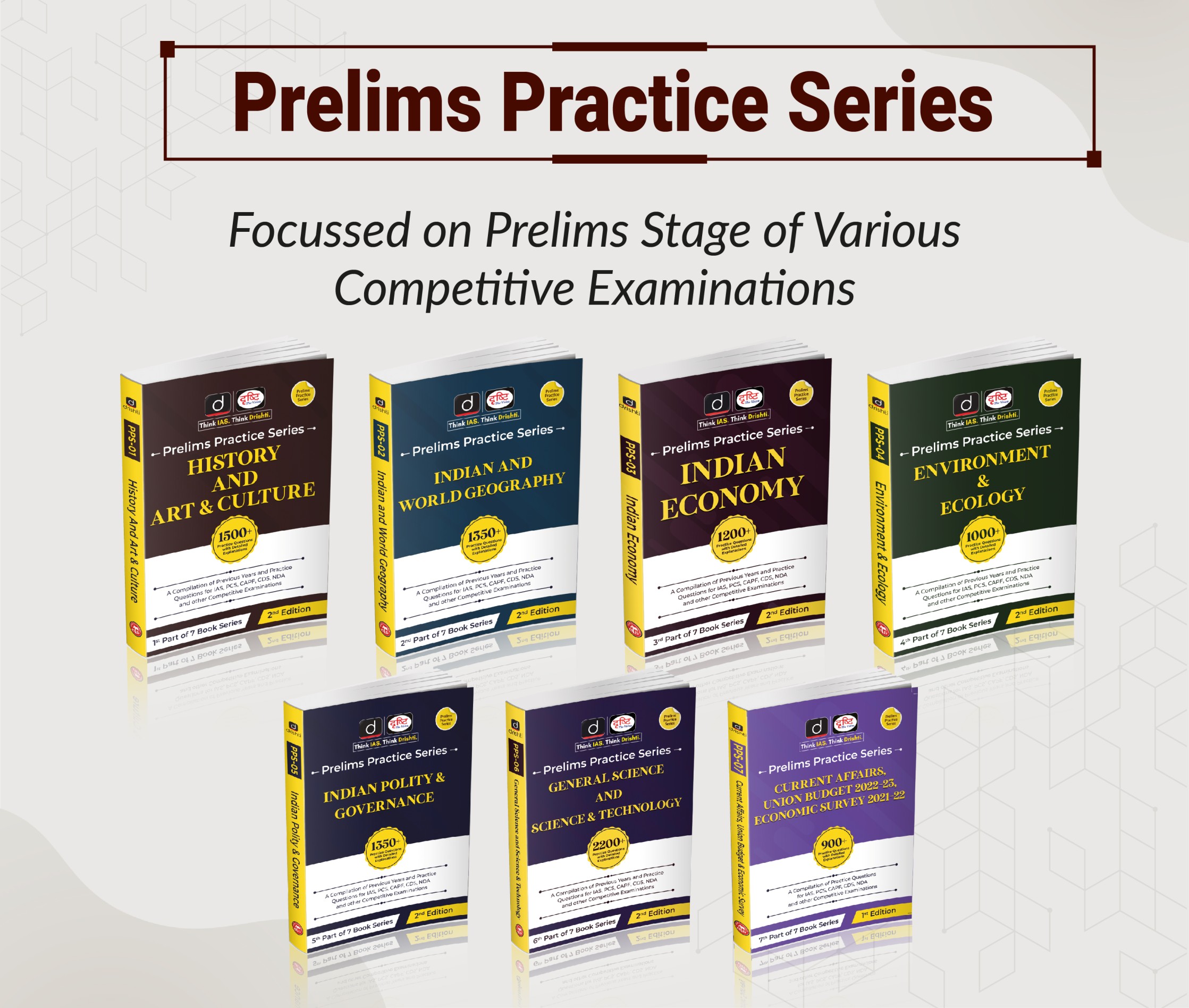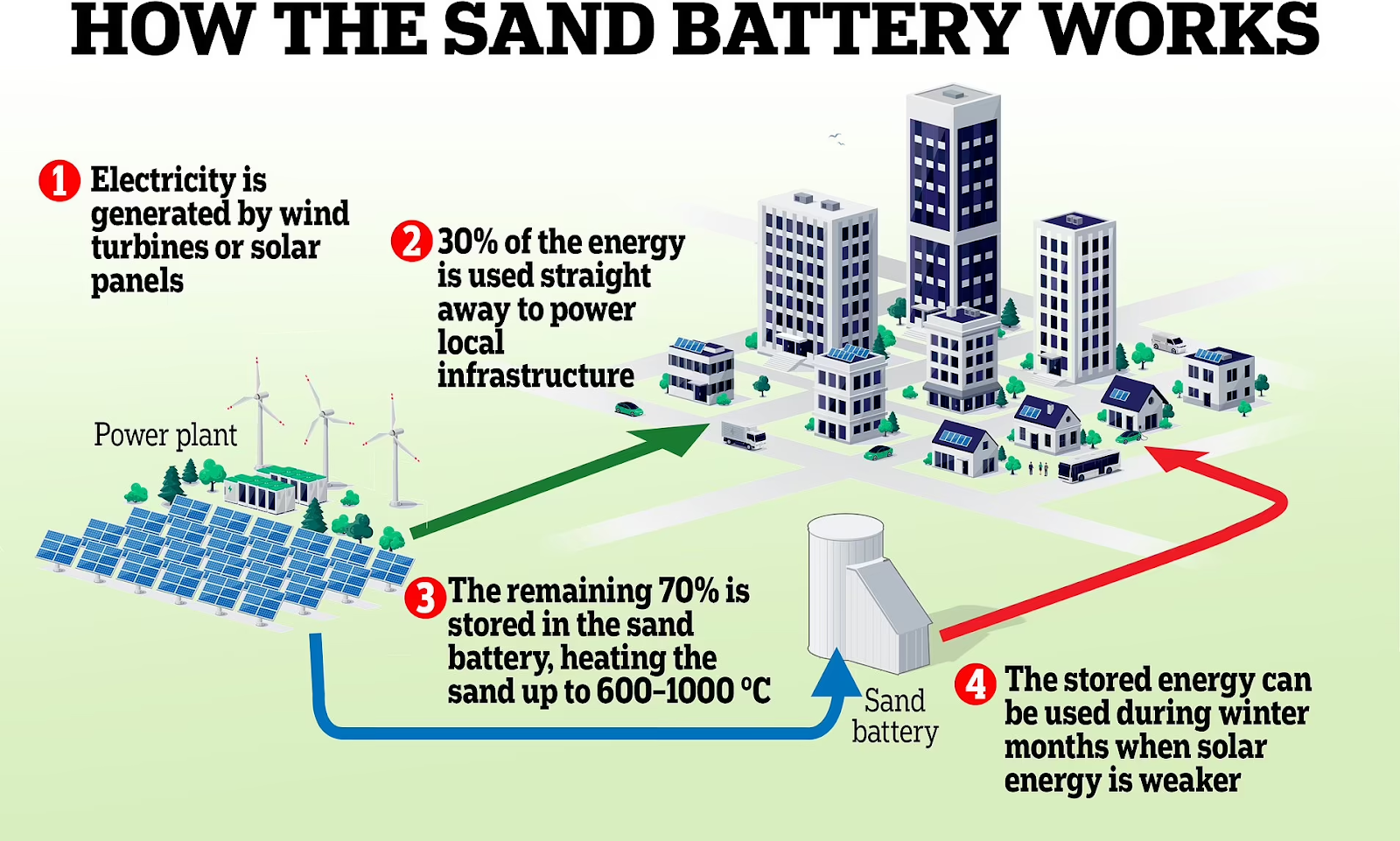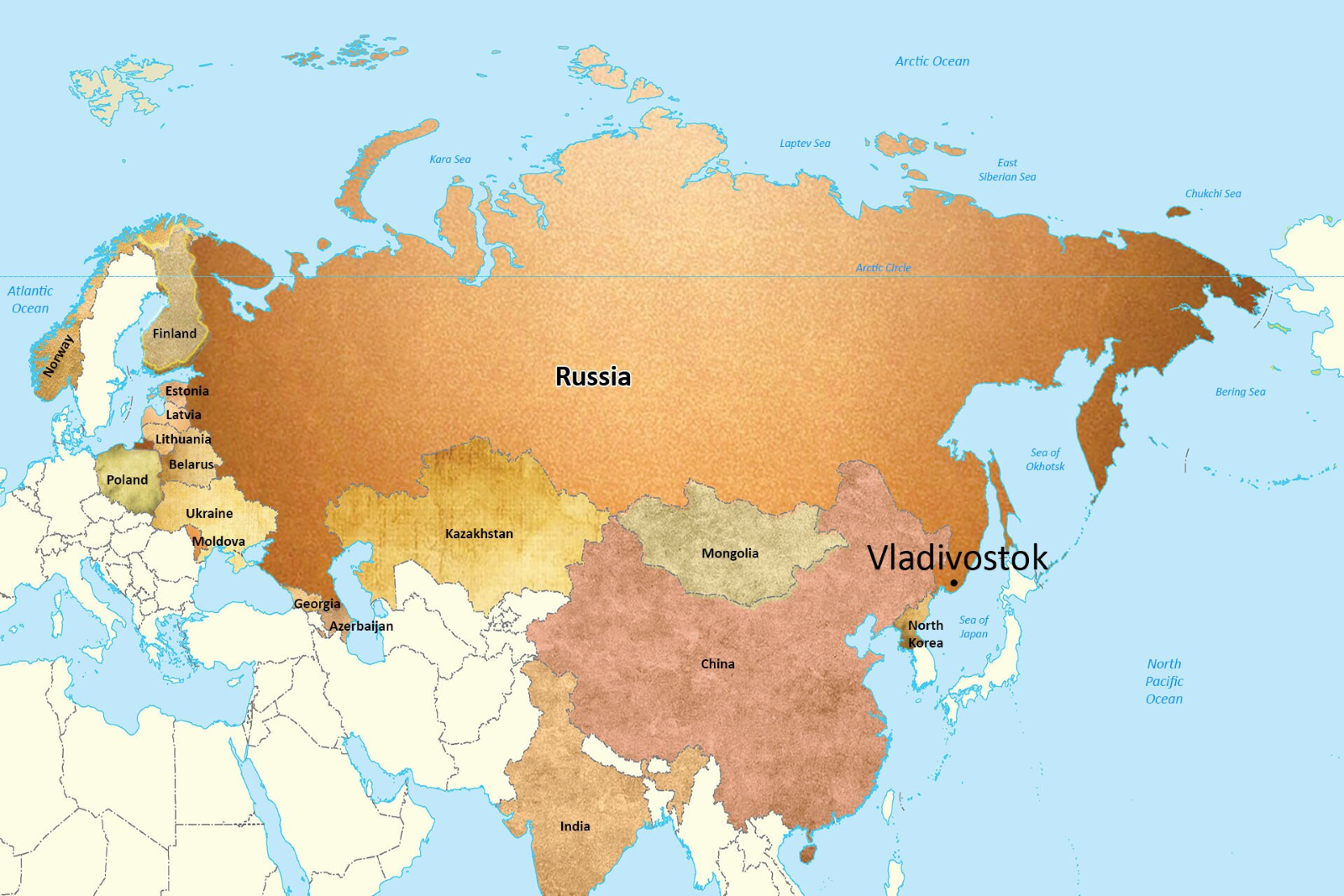Science & Technology
Uncontrolled Re-Entries of Satellites
Prelims: Outer Space Institute, Stages of Rocket launch, ISRO, RISAT-2.
Mains: Uncontrolled Re-Entries of Satellites and Associated Concerns.
Why in News?
Outer Space Institute (OSI) has called for both national and multilateral efforts to restrict uncontrolled re-entries of Satellites.
- OSI is a network of world-leading space experts united by their commitment to highly innovative, transdisciplinary research that addresses grand challenges facing the continued use and exploration of space.
What are the Stages of a Rocket Launch?
- Primary Stage:
- The primary stage of a rocket is the first rocket engine to engage, providing the initial thrust to send the rocket skyward.
- This engine will continue to operate until its fuel is exhausted, at which time it separates from the rocket and falls to the ground.
- Secondary Stage:
- After the primary stage has fallen away, the next rocket engine engages to continue the rocket on its trajectory.
- The second stage has considerably less work to do, since the rocket is already traveling at high speed and the rocket's weight has significantly decreased due to the separation of the first stage.
- If the rocket has additional stages, the process will repeat until the rocket is in space.
- Payload:
- Once the payload, whether it be a satellite or a spacecraft, is in orbit, the rocket’s final stage falls away, and the craft will be maneuvered using smaller rockets whose purpose is to guide the spacecraft. Unlike the main rocket engines, these maneuvering rockets can be used multiple times.
What is Uncontrolled Re-entry?
- In an uncontrolled re-entry, the rocket stage simply falls. Its path down is determined by its shape, angle of descent, air currents and other characteristics.
- It will also disintegrate as it falls. As the smaller pieces fan out, the potential radius of impact will increase on the ground.
- Some pieces burn up entirely while others don’t. But because of the speed at which they’re travelling, debris can be deadly.
- As per a 2021 report of the International Space Safety Foundation, an impact anywhere on an airliner with debris of mass above 300 grams would produce a catastrophic failure, meaning all people on board would be killed.
- Most rocket parts have landed in oceans principally because earth’s surface has more water than land. But many have dropped on land as well.
What are the Concerns?
- There have been many instances in the past where rockets striking some parts on Earth.
- Russian rocket in 2018 and China’s Long March 5B rockets in 2020 and 2022 striking parts of Indonesia, Peru, India and Ivory Coast, among others.
- Parts of a SpaceX Falcon 9 that fell down in Indonesia in 2016 included two “refrigerator-sized fuel tanks”.
- If re-entering stages still hold fuel, atmospheric and terrestrial chemical contamination is another risk.
- It is estimated that casualty risk from uncontrolled rocket body re-entries will be of order of 10% in the next decade” and that countries in the ‘Global South’ face a “disproportionately higher” risk of casualties.
- The U.S. Orbital Debris Mitigation Standard Practices (ODMSP) require all launches to keep the chance of a casualty from a re-entering body to be below 0.01%.
- There is no international binding agreement to ensure rocket stages always perform controlled re-entries nor on the technologies with which to do so.
- The Liability Convention 1972 requires countries to pay for damages, not prevent them.
- These technologies include wing-like attachments, de-orbiting brakes, and extra fuel on the re-entering body, and design changes that minimize debris formation.
What can make Minimum Damage?
- Future solutions need to be extended not just launching satellites but to re-entering satellites as well.
- Advances in electronics and fabrication have made way for smaller satellites, which are easier to build and launch in large numbers. These satellites experience more atmospheric drag than if they had been bigger, but they are also likely to burn up during re-entry.
- India’s 300-kg RISAT-2 satellite re-entered earth’s atmosphere in October after 13 years in low-earth orbit. The ISRO (Indian Space Research Organisation) tracked it with its system for safe and sustainable space operations management from a month beforehand. It plotted its predicted paths using models in-house.
Note
- The Soviet Union launched the first artificial satellite in 1957.
- There are more than 6,000 satellites in orbit, most of them in low-earth (100-2,000 km) and geostationary (35,786 km) orbits, placed there in more than 5,000 launches.
- The number of rocket launches have been surging with the advent of reusable rocket stages.
UPSC Civil Services Examination, Previous Year Questions (PYQs)
Prelims
Q. Satellites used for telecommunication relay are kept in a geostationary orbit. A satellite is said to be in such an orbit when: (2011)
- The orbit is geosynchronous.
- The orbit is circular.
- The orbit lies in the plane of the Earth’s equator.
- The orbit is at an altitude of 22,236 km.
Select the correct answer using the codes given below:
(a) 1, 2 and 3 only
(b) 1, 3 and 4 only
(c) 2 and 4 only
(d) 1, 2, 3 and 4
Ans: (a)
Mains
Q. Discuss India’s achievements in the field of Space Science and Technology. How the application of this technology has helped India in its socio-economic development? (2016)

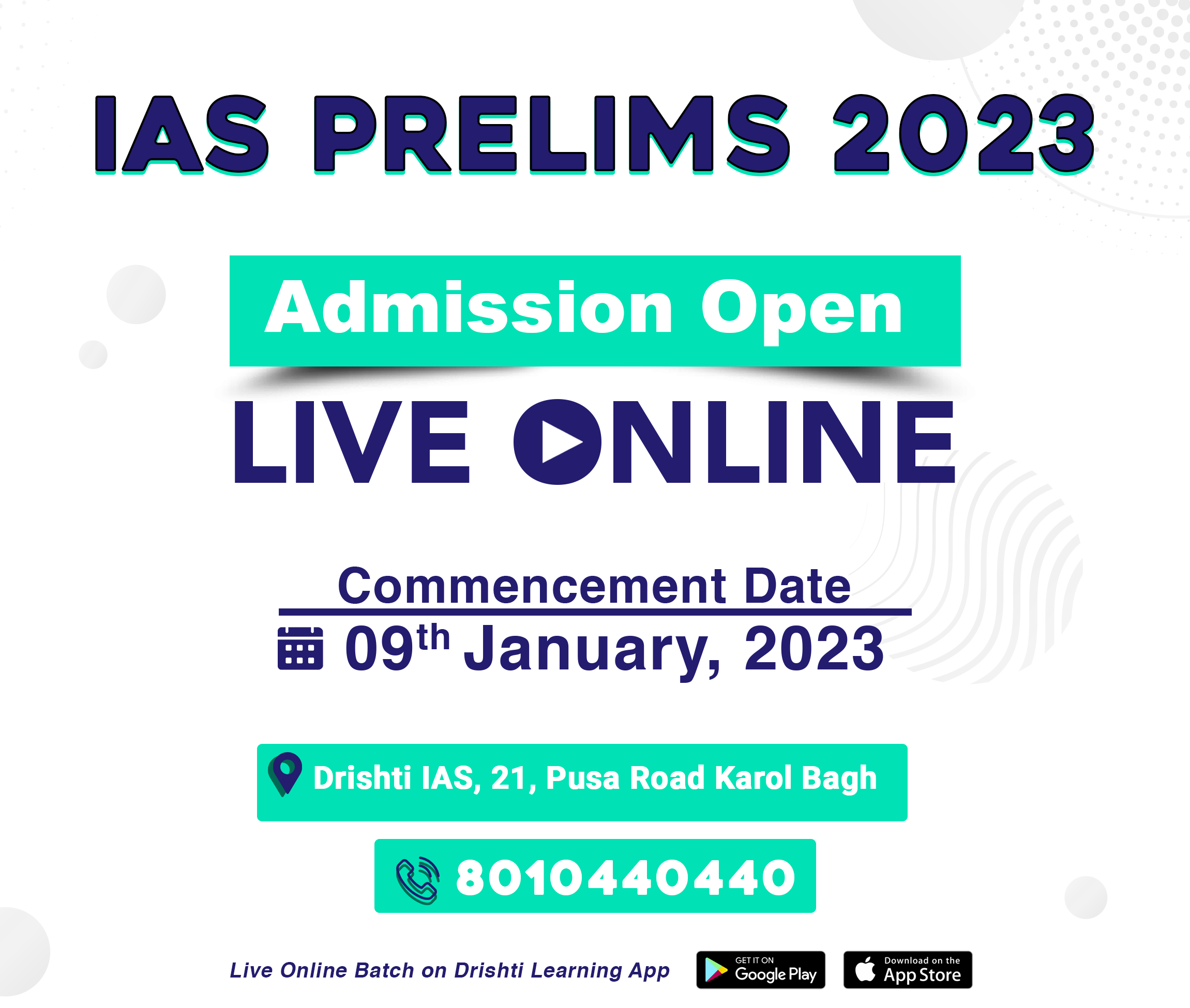
Agriculture
Kisan Diwas
For Prelims: Kisan Diwas, National Farmers Day, Chaudhary Charan Singh, Initiatives for Farmers
For Mains: Government Policies & Interventions, Schemes related to Farmers
Why in News?
As many as 13 farmers known for innovative farming were felicitated to mark Kisan Diwas or National Farmers Day on 23rd December, 2022.
- The Kisan Diwas is observed across the country to celebrate the birth anniversary of Chaudhary Charan Singh, the former Prime Minister of India.
What are the Key Facts about Chaudhary Charan Singh?
- He was born in 1902 at Noorpur in Meerut district of Uttar Pradesh and was the Prime Minister of India from 28th July 1979 to 14th January 1980.
- Being a proponent of rural and agricultural development, he made continuous efforts for keeping agriculture at the centre of planning for India.
- He was given the nickname ‘Champion of India’s Peasants’ for his work towards upliftment of farmers and development of agriculture throughout the country.
- He took a leading part in formulation and finalisation of the Debt Redemption Bill 1939, in order to give relief to the peasantry from moneylenders.
- He was instrumental in bringing about the Land Holding Act, 1960 which was aimed at lowering the ceiling on land holdings to make it uniform throughout the Uttar Pradesh.
- He left Congress in 1967 and formed his independent party known as the Bharatiya Lok Dal.
- He served twice as Chief Minister of Uttar Pradesh. He became Prime Minister of India in 1979.
- He was the author of several books and pamphlets, including ‘Abolition of Zamindari’, ‘Co-operative Farming X-rayed’, ‘India’s Poverty and its Solution’, ‘Peasant Proprietorship or Land to the Workers’ and ‘Prevention of Division of Holdings Below a Certain Minimum’.
What are the Related Initiatives for Farmers?
- PM-KISAN: Under the scheme, the Centre transfers an amount of Rs 6,000 per year, in three equal instalments, directly into the bank accounts of all landholding farmers irrespective of the size of their land holdings.
- National Mission for Sustainable Agriculture: It aims at promoting sustainable agriculture practices best suitable to the specific agro-ecology.
- Pradhan Mantri Krishi Sinchayee Yojana: It has three main components namely Accelerated Irrigation Benefit Programme (AIBP), Har Khet ko Pani (HKKP), and watershed development components.
- Rashtriya Krishi Vikas Yojana (RKVY): It was initiated in 2007, and allowed states to choose their own agriculture and allied sector development activities as per the district/state agriculture plan.
- Nutrient Based Subsidy (NBS) Programme: Under this programme, fertilizers are provided to the farmers at the subsidized rates based on the nutrients (N, P, K & S) contained in these fertilizers.
- Rashtriya Gokul Mission: It is being implemented for development and conservation of indigenous bovine breeds since December 2014.
- Pradhan Mantri Fasal Bima Yojana: It provides a comprehensive insurance cover against failure of the crop thus helping in stabilising the income of the farmers.
- Paramparagat Krishi Vikas Yojana: Launched in 2015, it is an elaborated component of Soil Health Management (SHM) of major project National Mission of Sustainable Agriculture (NMSA).
- Kisan Credit Card : The scheme was introduced in 1998 for providing adequate and timely credit support from the banking system, under a single window with flexible and simplified procedure to the farmers.
UPSC Civil Services Examination, Previous Year Questions (PYQs)
Q1. Under the Kisan Credit Card scheme, short-term credit support is given to farmers for which of the following purposes? (2020)
- Working capital for maintenance of farm assets
- Purchase of combine harvesters, tractors and mini trucks
- Consumption requirements of farm households
- Post-harvest expenses
- Construction of family house and setting up of village cold storage facility
Select the correct answer using the code given below:
(a) 1, 2 and 5 only
(b) 1, 3 and 4 only
(c) 2, 3, 4 and 5 only
(d) 1, 2, 3, 4 and 5
Ans: (b)
Exp:
- The Kisan Credit Card (KCC) scheme was introduced in 1998 for providing adequate and timely credit support from the banking system under a single window with flexible and simplified procedure to the farmers for their cultivation and other needs like purchase of agriculture inputs such as seeds, fertilizers, pesticides etc. and draw cash for their production needs.The scheme was further extended in the year 2004 for the investment credit requirement of farmers viz allied and non-farm activities.
- Kisan Credit Card is provided with the following objectives:
- The short term credit requirements for cultivation of crops,
- Post harvest expenses, hence 4 is correct.
- Produce marketing loan,
- Consumption requirements of farmer household, hence 3 is correct.
- Working capital for maintenance of farm assets and activities allied to agriculture, like dairy animals, inland fishery, etc., hence, 1 is correct.
- Investment credit requirement for agriculture and allied activities like pumpsets, sprayers, dairy animals, etc. However, this segment forms the long term credit limit portion.
- The Kisan Credit Card Scheme is implemented by Commercial Banks, RRBs, Small Finance Banks and Cooperatives.
- The short-term credit support is not given to farmers for Purchase of combine harvesters, tractors and mini trucks and Construction of family house and setting up of village cold storage facility. Hence, 2 and 5 are not correct.
- Therefore, option (b) is the correct answer.
Q2. With reference to ‘Pradhan Mantri Fasal Bima Yojana’, consider the following statements: (2016)
- Under this scheme, farmers will have to pay a uniform premium of two percent for any crop they cultivate in any season of the year.
- This scheme covers post-harvest losses arising out of cyclones and unseasonal rains.
Which of the statements given above is/are correct?
(a) 1 only
(b) 2 only
(c) oth 1 and 2
(d) Neither 1 nor 2
Ans: (b)

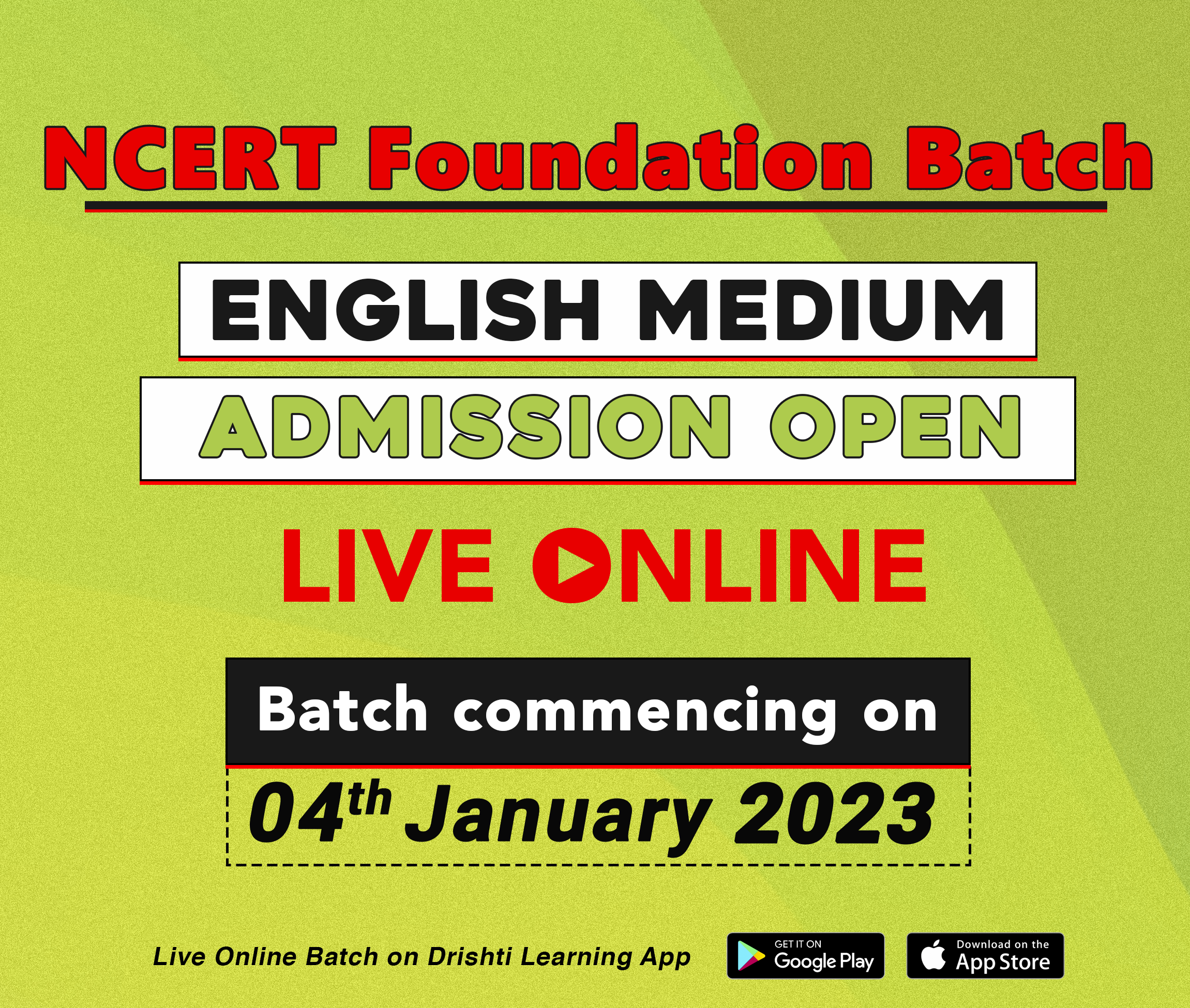
Science & Technology
Japan’s New Policy on Nuclear Energy
Prelims: Nuclear Energy, Nuclear Power Plants, Uranium-235, India-U.S. civil nuclear deal.
Mains: Prospect of India’s Nuclear Energy.
Why in News?
Recently, Japan has adopted a new policy promoting greater use of Nuclear Energy to ensure a stable power supply amid global fuel shortages and to reduce carbon emissions.
What is Japan’s New Policy?
- It is Japan’s major reversal of its nuclear phase-out plan following the Fukushima crisis in 2011.
- Fukushima accident caused by Tsunami in 2011 was the second worst nuclear accident in the history of nuclear power generation. The site is on Japan’s Pacific coast, in northeastern Fukushima prefecture about 100 km south of Sendai.
- The Policy seeks to maximize the use of existing nuclear reactors by restarting as many of them as possible and prolonging the operating life of old reactors beyond their 60-year limit, and by developing next-generation reactors to replace them.
- It pledges to sustain use of nuclear power into the future. Most nuclear reactors in Japan are more than 30 years old.
- It aims to push for the development and construction of “next-generation innovative reactors” with safer features to replace about 20 reactors now set for decommissioning.
- Nuclear energy accounts for less than 7% of Japan’s energy supply, and achieving the government’s goal of raising its share to 20-22% by fiscal 2030 will require about 27 reactors, from the current 10.
What is the Prospect of India’s Nuclear Energy?
- Status of Nuclear Energy:
- Nuclear energy is the fifth-largest source of electricity for India. India has over 22 nuclear reactors in 7 power plants across the country which produces 6780 MW of nuclear power. The 7 power plants are:
- Tarapur Atomic Power Station (TAPS), Maharashtra.
- Kudankulam Nuclear Power Station (KKNPS), Tamil Nadu
- Kakrapar Atomic Power Station (KAPS), Gujarat.
- (Kalpakkam) Madras Atomic Power Station (MAPS), Tamil Nadu.
- Narora Atomic Power Station (NAPS), Uttar Pradesh.
- Kaiga Generating Station (KGS), Karnataka.
- Rajasthan Atomic Power Station (RAPS), Rajasthan.
- The public sector entity, Nuclear Power Corporation of India (NPCIL), is responsible for designing, building, commissioning and operating nuclear power reactors in the country.
- NPCIL operates under the Indian government’s Department of Atomic Energy (DAE).
- Nuclear energy is the fifth-largest source of electricity for India. India has over 22 nuclear reactors in 7 power plants across the country which produces 6780 MW of nuclear power. The 7 power plants are:
- Significance for India:
- Availability of Thorium: India is the leader of the new resource of nuclear fuel called Thorium, which is considered to be the nuclear fuel of the future.
- With the availability of Thorium, India has the potential to be the first nation to realise the dream of a fossil fuel-free nation.
- Cuts Import Bills: Nuclear energy will also relieve the nation of about USD 100 billion annually which we spend on importing petroleum and coal.
- Stable and Reliable Source: The greenest sources of power are definitely solar and wind. But solar and wind power, despite all their advantages, are not stable and are dependent excessively on weather and sunshine conditions.
- Nuclear power, on the other hand, provides a relatively clean, high-density source of reliable energy with an international presence.
- Cheaper to Run: Nuclear power plants are cheaper to run than their coal or gas rivals. It has been estimated that even factoring in costs such as managing radioactive fuel and disposal nuclear plants cost between 33 to 50% of a coal plant and 20 to 25% of a gas combined-cycle plant.
- Availability of Thorium: India is the leader of the new resource of nuclear fuel called Thorium, which is considered to be the nuclear fuel of the future.
- Challenges:
- Insufficient Nuclear Installed Capacity: In 2008, the Atomic Energy Commission projected that India would have 650GW of installed capacity by 2050; the current installed capacity is only 6.78 GW.
- Such targets were based on the expectation that India would import many light-water reactors after the India-U.S. civil nuclear deal. But the deal has not led to the establishment of a single new nuclear plant, over 13 years after it was concluded.
- Lack of Public Funding: Nuclear power has never received the quantum of generous subsidy the fossil fuel received in the past and renewable is receiving currently.
- In absence of public funding, nuclear power will find it tough to compete against natural gas and renewables in the future.
- Acquisition of Land: Land acquisition and selection of location for Nuclear Power Plant (NPP) is also a major problem in the country.
- NPP’s like Kudankulam in Tamil Nadu and Kovvada in Andhra Pradesh have met with several delays due to the land acquisition related challenges.
- Impact of Climate Change: Climate change will increase the risk of nuclear reactor accidents. During the world’s increasingly hot summers, several nuclear power plants have already had to be temporarily shut down or taken off the grid.
- Further, nuclear power plants depend on nearby water sources to cool their reactors, and with many rivers drying up, those sources of water are no longer guaranteed.
- Deployment at Insufficient Scale: It might not be the appropriate choice for mitigating India’s carbon emissions since it cannot be deployed at the necessary scale.
- Nuclear Waste: Nuclear waste can have drastically bad effects on life, causing cancerous growths, for instance, or causing genetic problems for many generations of animals and plants.
- In a densely populated country such as India, land is at a premium and emergency health care is far from uniformly available.
- Insufficient Nuclear Installed Capacity: In 2008, the Atomic Energy Commission projected that India would have 650GW of installed capacity by 2050; the current installed capacity is only 6.78 GW.
What are India’s Initiatives Regarding Nuclear Energy?
- Three-stage Nuclear Power Programme:
- India has consciously proceeded to explore the possibility of tapping nuclear energy for the purpose of power generation.
- In this direction a three-stage nuclear power programme was formulated by Homi Bhabha in the 1950s.
- The Atomic Energy Act, 1962:
- The Atomic Energy Act, 1962 was framed and implemented with the set objectives of using two naturally occurring elements Uranium and Thorium as nuclear fuel in Indian Nuclear Power Reactors.
- Pressurised Heavy Water Reactors:
- In December, 2021, the Government of India informed Parliament about building ten indigenous Pressurised Heavy Water Reactors (PHWRs) to be set up in fleet mode and had granted “in principle approval” for 28 additional reactors, including 24 to be imported from France, the U.S. and Russia.
- Nuclear power reactors at Jaitapur in Maharashtra:
- Government has given in-principle (first step) approval for setting up of six nuclear power reactors at Jaitapur in Maharashtra.
- Jaitapur would be the world’s most powerful nuclear power plant. There would be six state-of-the-art Evolutionary Power Reactors (EPRs) with an installed capacity of 9.6 GWe that will produce low carbon electricity.
- The six nuclear power reactors, which will have a capacity of 1,650 MW each, will be set up with technical cooperation from France.
Way Forward
- The global energy crisis should spur a rational relook at an energy source as clear as nuclear which needlessly seen as a hot potato.
- We must make the right choices between various low-carbon technologies, all of which have some social and environmental impact.
- To meet rising energy demands, nuclear power is one of the better solutions.
- Considering lower capacity utilisation of renewables, rising fossil fuel prices and ever soaring pollution problems, the potential of nuclear power must be fully exploited.
UPSC Civil Services Examination, Previous Year Questions (PYQs)
Prelims
Q. The function of heavy water in a nuclear reactor is to (2011)
(a) Slow down the speed of neutrons
(b) Increase the speed of neutrons
(c) Cool down the reactor
(d) Stop the nuclear reaction
Ans: (a)
Exp:
- Heavy water (D2O), also called Deuterium Oxide, is water composed of Deuterium (Hydrogen isotope) with a mass double that of regular water (H2O).
- Heavy water occurs naturally, although it is much less common than regular water.
- It is commonly used in nuclear reactors as a neutron moderator, i.e., to slow down the speed of neutrons.
- Therefore, option (a) is the correct answer.
Mains
Q. With growing energy needs should India keep on expanding its nuclear energy programme? Discuss the facts and fears associated with nuclear energy. (2018)

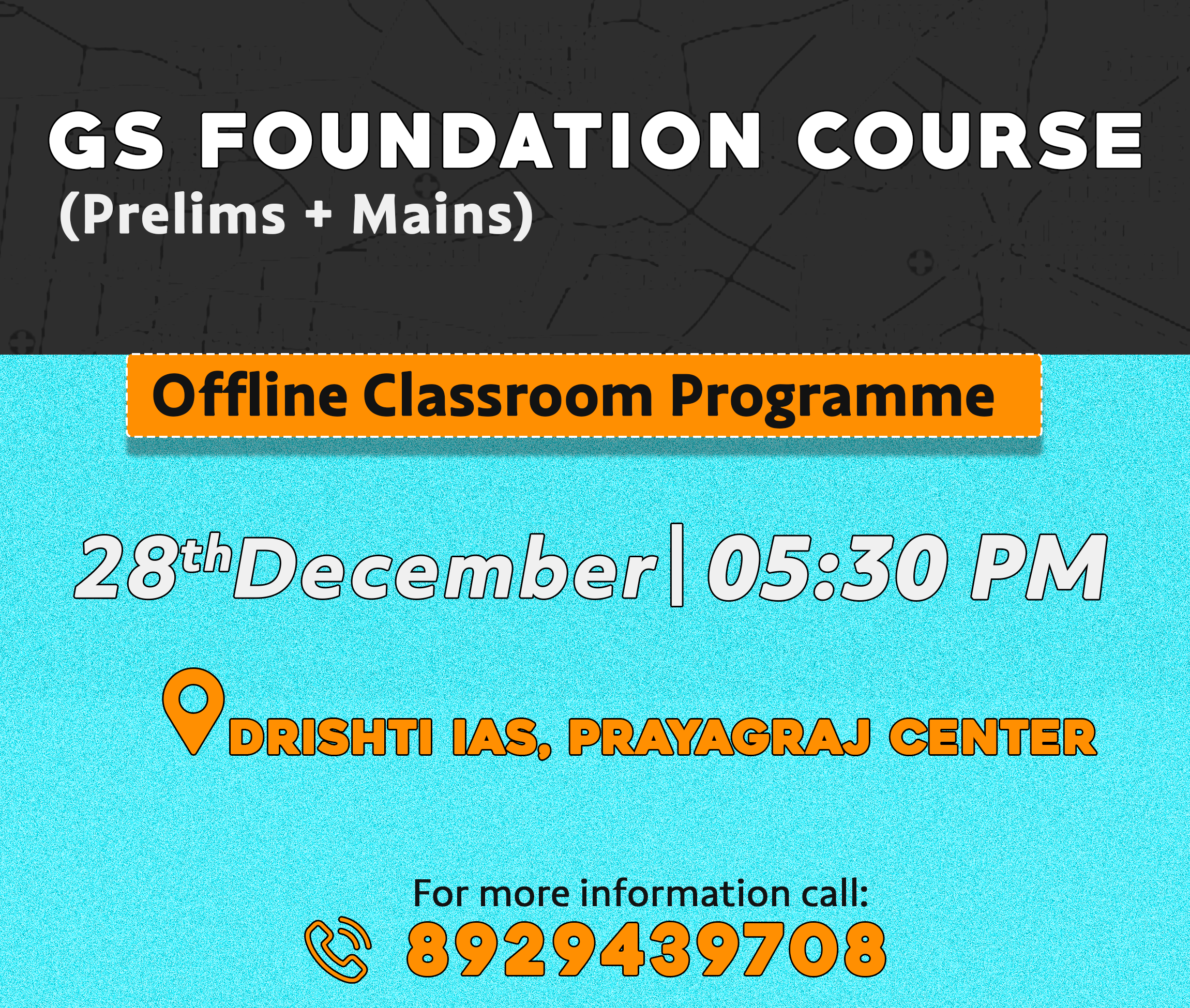
Governance
Ministry of Panchayati Raj Year End Review 2022
For Prelims: Panchayati Raj Institution, Initiatives for Development of PRI
For Mains: Year End Review of Ministry of Panchayati Raj, Achievements of the Ministry, Initiatives for Development of PRI
Why in News?
Recently, the year-end-review of the Ministry of Panchayati Raj for the year 2022 was released.
What are the Key Achievements of the Ministry?
- SVAMITVA Scheme:
- About:
- Survey of Villages and Mapping with Improvised Technology in Village Areas (SVAMITVA) scheme was launched by the Prime Minister on National Panchayati Raj Day 2020 to enable economic progress of Rural India by providing “Record of Rights” to every rural household owner.
- Achievements:
- As on December 2022, drone flying has been completed in around 2 lakh villages.
- Drone flying has been saturated in Dadra and Nagar Haveli and Daman and Diu, Delhi, Haryana, Lakshadweep Islands, Puducherry, Uttarakhand, Goa, Andaman and Nicobar Islands.
- Property cards have been prepared for all the Inhabited villages of Haryana and Uttarakhand.
- About:
- e-Gram Swaraj e-Financial Management System:
- e-Gram Swaraj is a Simplified Work Based Accounting Application for Panchayati Raj.
- It assists in enhancing the credibility of Panchayat through inducing greater devolution of funds to Panchayati Raj Institutions. It brings better transparency through decentralized planning, progress reporting and work-based accounting.
- Geo-Tagging of Assets:
- Ministry has developed “mActionSoft”, a mobile based solution to help in capturing photos with Geo-Tags (i.e., GPS Coordinates) for the works which have assets as an output.
- As of December 2022, 2.05 lakh photographs of the assets have been uploaded by the Gram Panchayats for the activities taken under Fifteen Finance Commission in 2022.
- Citizen Charter:
- In order to focus on the commitment of the Panchayati Raj Institutions (PRIs) towards its Citizens in respects of Standard of Services, the Ministry has provided platform to upload Citizen Charter document with the slogan “Meri Panchayat Mera Adhikaar – Jan Sevaayein Hamaare Dwaar”.
- Till December 2022, 2.15 lakh Gram Panchayats have uploaded their approved Citizen Charter and offering 952 services to citizen out of which 268 services are delivered through online mode.
- Audit Online:
- In order to provide audited reports of Panchayat accounts in the public domain, the Ministry had conceptualized the application “AuditOnline” for carrying out online audits of Panchayat accounts pertaining to Central Finance Commission Grants.
- It not only facilitates the auditing of accounts but also provisions for maintaining digital audit records pertaining to audits that have been carried out.
- Gram Urja Swaraj:
- The Ministry has started the Gram Urja Swaraj initiative, with an aim to promote adoption of renewable energy at Gram Panchayat level.
- The Ministry has also launched the Gram Urja Swaraj Portal in May 2022, to capture the inclination of Panchayati Raj Institutions (PRIs) towards adoption of renewable energy.
- Revamped Rashtriya Gram Swaraj Abhiyan (2022-23 to 2025-26):
- The focus of the scheme of Revamped RGSA is on re-imagining Panchayati Raj Institutions as vibrant centers of local self-governance with special focus on Localization of Sustainable Development Goals (LSDGs) at grassroot level adopting thematic approach through concerted and collaborative efforts of Central Ministries and State Line departments and other Stakeholders with ‘Whole of Government and Whole of Society’ approach.
- The Revamped RGSA will extend to all States and Union Territories (UTs) of the country.
- As of December 2022, an amount of Rs.435.34 crore has been released to 11 State and other implementing agencies and more than 13 lakh Elected Representatives, Functionaries and & other stakeholders of Panchayats were provided various and multiple trainings for which details have been uploaded on Training Management Portal.
UPSC Civil Services Examination, Previous Year Questions (PYQs)
Q. The fundamental object of Panchayati Raj system is to ensure which among the following? (2015)
- People’s participation in development
- Political accountability
- Democratic decentralization
- Financial mobilization
Select the correct answer using the code given below
(a) 1, 2 and 3 only
(b) 2 and 4 only
(c) 1 and 3 only
(d) 1, 2, 3 and 4
Ans: (c)
Exp:
- The most fundamental objective of the Panchayati Raj system is to ensure people’s participation in development and democratic decentralization.
- Establishment of Panchayati Raj Institutions does not automatically lead to political accountability.
- Financial mobilization is not the fundamental objective of Panchayati Raj, although it seeks to transfer finances and resources to the grass root government.

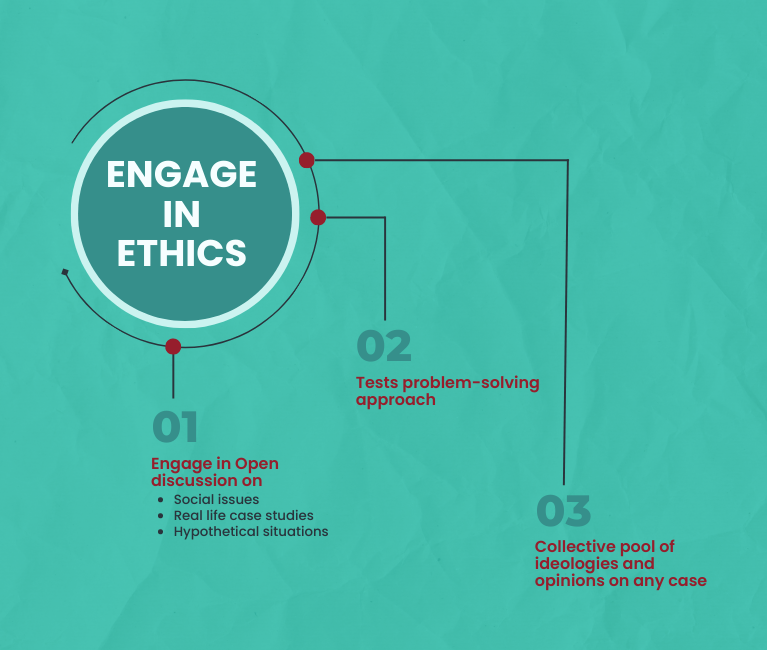
Important Facts For Prelims
Social Progress Index 2022
Why in News?
Recently, the Social Progress Index (SPI) for States and Districts of India was released by the Economic Advisory Council to the Prime Minister (EAC-PM).
- The SPI was compiled by the Institute for Competitiveness and Social Progress Imperative.
- The report also dwells on India's performance (ranked 110 out of 169 nations) based on the global SPI 2022 that is brought out by Social Progress Imperative since 2013.
What is EAC-PM?
- It is an independent body constituted to give advice on economic and related issues to the Prime Minister.
- EAC-PM is responsible for analysing and advising the Prime Minister on any issue of macroeconomic importance that the Prime Minister refers to.
- These could be either suo-motu or on reference from the Prime Minister or anyone else.
- They also include attending to any other task as may be desired by the Prime Minister from time to time.
What is SPI all about?
- About:
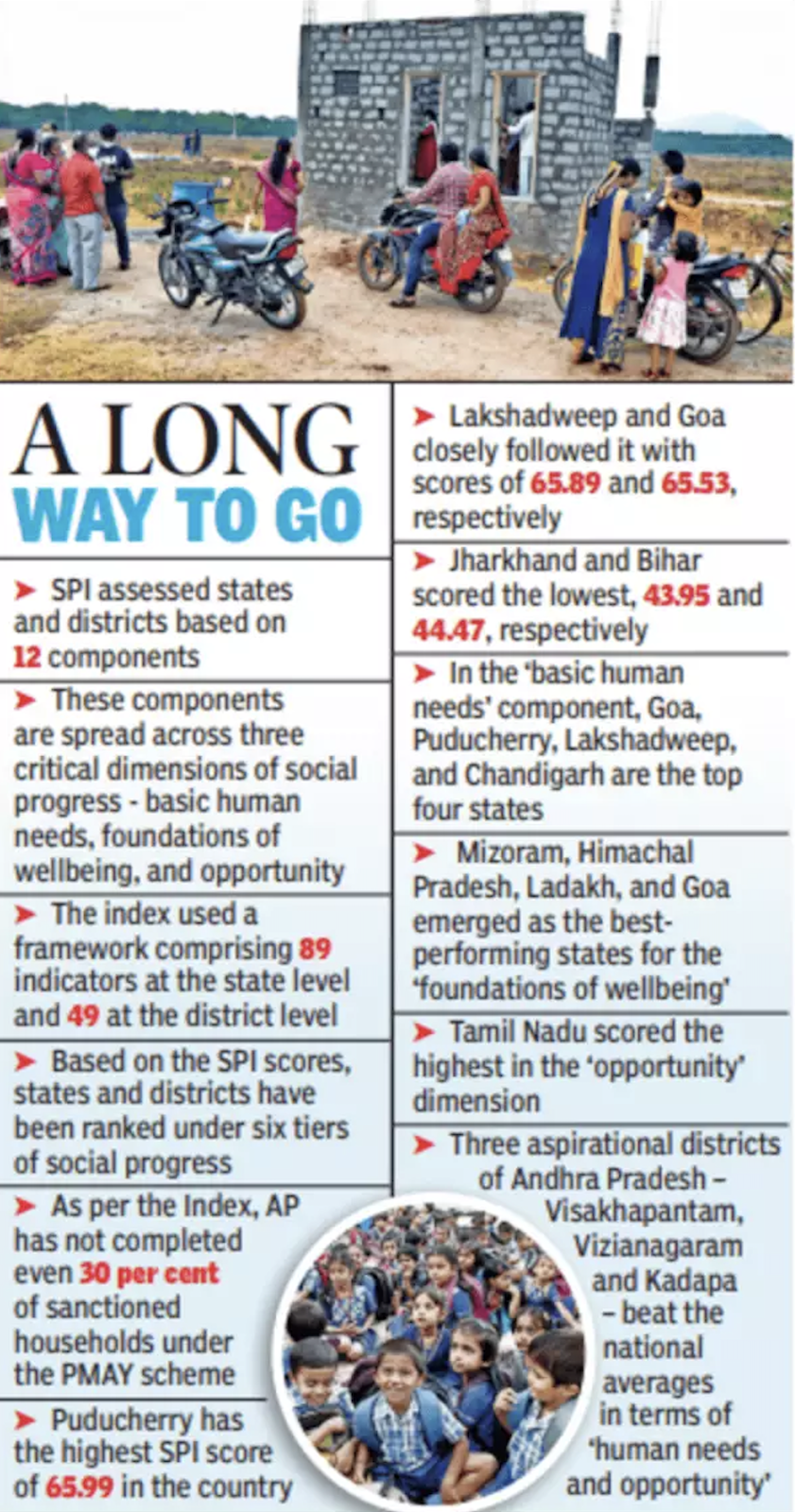
- SPI is a comprehensive tool that can serve as a holistic measure of a country's social progress at the national and sub-national levels.
- The report aims to provide a systematic account of the social progress made at all levels in the country.
- The index uses an extensive framework comprising 89 indicators at the state level and 49 at the district level.
- Assessment Components:
- The index assesses states and districts based on 12 components across three critical dimensions of social progress:
- Basic Human Needs: It assesses the performance of states and districts in terms of Nutrition and Basic Medical Care, Water and Sanitation, Personal Safety and Shelter.
- Foundations of Wellbeing: It evaluates the progress made by the country across the components of Access to Basic Knowledge, Access to Information and Communication, Health and Wellness, and Environmental Quality
- Opportunity: It focuses on Personal Rights, Personal Freedom and Choice, Inclusiveness, and Access to Advanced Education.
- The index assesses states and districts based on 12 components across three critical dimensions of social progress:
What are the Findings of the Index?
- Highest SPI Score: Puducherry
- Lowest SPI Score: Jharkhand and Bihar
- Basic Human Needs: Goa, Puducherry, Lakshadweep, and Chandigarh are the top four states with the best performance in water, sanitation and shelter.
- Foundations of Wellbeing: Mizoram, Himachal Pradesh, Ladakh, and Goa have emerged as the best-performing states for the Foundations of Wellbeing.
- For Environmental Quality, Mizoram, Nagaland, and Meghalaya are the top three states.
- Opportunity: Tamil Nadu has achieved the highest component score for Opportunity dimension.
- Top Best Performing Districts: Aizawl (Mizoram), Solan (Himachal Pradesh) and Shimla (Himachal Pradesh) have emerged as the top three best-performing districts.


Important Facts For Prelims
Sand Battery
Why in News?
Sand batteries can store a significant extent of thermal energy and can aid Clean Energy Solutions.
- Finland has installed the world’s first fully working "sand battery" in its town called Kankaanpaa capable of storing green power for months at a time. The batteries can also solve the issue of year-round supply.
What is a Sand Battery?
- A “sand battery” is a high temperature thermal energy storage that uses sand or sand-like materials as its storage medium. It stores energy in sand as heat.
- Sand is a very effective medium for retaining heat over a long period, storing power for months at a time.
- Its main purpose is to work as a high-power and high-capacity reservoir for excess wind and solar energy. The energy is stored as heat, which can be used to heat homes, or to provide hot steam and high temperature process heat to industries that are often fossil-fuel dependent.
- The sand battery helps to ambitiously upscale renewables production by ensuring there’s always a way to benefit from clean energy, even if the surplus is massive.
How can it Address Europe's Energy Crisis?
- Russia — the supplier of 40 % of the European Union’s natural gas supply — has shut off its pipelines to a large extent.
- Countries in the Northern Hemisphere rely on a central heating system in winters, with natural gas as the most common heating fuel. This is unlike developing countries with a tropical climate.
- The sale of heat pumps, considered a renewable source of internal heating, rose by 35 % in the EU. A rise in the sale of other controversial alternatives, such as wood pellets, accompanied this simultaneously.
- The world is increasingly looking at renewable internal heating sources.
- Thermal storage will reduce reliance on fossil fuels, provide storage for intermittent renewable energy and help balance the grid.
- Thermal energy storage is yet to develop as a field in this sense globally fully.
- In such times, finding alternative energy supplies to fill in the gap can be crucial, these Sand Batteries can prove to be the right step in the right direction.
- This patented technology is useful to a country like Finland, one of the countries closest to the North Pole, where the sun sets at around 3 pm in winter months with temperatures as low as minus 30 degrees Celsius.
- It is believed that it could solve the problem of year-round supply, a major issue for green energy.


Important Facts For Prelims
Incovacc, Intranasal Covid-19 Vaccine
Why in News?
Bharat Biotech’s intranasal vaccine, BBV154 or Incovacc is the world’s first intranasal vaccine to be approved as a booster dose for Covid-19.
What is Incovacc?
- About:
- The nasal vaccine is a recombinant replication-deficient adenovirus vectored vaccine with a pre-fusion stabilized spike protein.
- Significance:
- With the vaccine being delivered through a nasal spray, it will do away with the need for needles and syringes currently required for all the Covid-19 vaccines available.
- It will also reduce dependence on personnel trained to give shots.
- Incovacc is effective for Omicron variants that replicate in the upper respiratory tract before entering the lungs.
- Mechanism:
- As the vaccine is given nasally, it triggers an immune response in the mucosal membrane.
- BBV154 may produce local antibodies in the upper respiratory tract which may provide the potential to reduce infection and transmission.
- Since the nasal vaccine gives local immunity (in the nose where the virus first enters), it can be said that it is more likely to be effective at preventing transmission than the current generation of vaccines we have.
- Booster Dose:
- This is the second heterologous booster to be included in the vaccination programme after Corbevax.
- In homologous boosting, a person is injected with the same vaccine that was used for the two previous doses. In heterologous boosting, a person is injected with a different vaccine from that was used for the primary dose.
- It has previously received the nod to be used as a primary dose.
- Incovacc will be available as a booster dose only for those above 18 years of age who have got 2 doses of either Covaxin or Covishield.
- It will not be administered to any other category, for now, including those who have already taken booster dose.
- Those who have taken Covishield and Covaxin can now take this nasal vaccine as a heterologous booster dose.
- This is the second heterologous booster to be included in the vaccination programme after Corbevax.
UPSC Civil Services Examination, Previous Year Questions (PYQs)
Q. In the context of vaccines manufactured to prevent COVID-19 pandemic, consider the following statements: (2022)
- The Serum Institute of India produced COVID-19 vaccine named Covishield using mRNA platform.
- Sputnik V vaccine is manufactured using vector-based platform.
- COVAXIN is an inactivated pathogen-based vaccine.
Which of the statements given above are correct?
(a) 1 and 2 only
(b) 2 and 3 only
(c) 1 and 3 only
(d) 1, 2 and 3
Ans: (b)
Exp:
- COVISHIELD vaccine is based on the platform which uses a recombinant, replication-deficient chimpanzee adenovirus vector encoding the SARS-CoV-2 Spike (S) glycoprotein. Following administration, the genetic material of part of coronavirus is expressed which stimulates an immune response. Hence, statement 1 is not correct.
- Sputnik V is the world's first registered vaccine based on a well-studied human adenovirus vector platform. It has been approved for use in 71 countries with a total population of 4 billion people. The vaccine is named after the first Soviet space satellite. The vaccine’s efficacy is 97.6%, based on the analysis of data on the incidence of coronavirus among Russians vaccinated with both vaccine components between December 5, 2020 and March 31, 2021. Hence, statement 2 is correct.
- Covaxin is an inactivated viral vaccine. This vaccine is developed with Whole-Virion Inactivated Vero Cell-derived technology. They contain inactivated viruses, which cannot infect a person but still can teach the immune system to prepare a defence mechanism against the active virus. Hence, statement 3 is correct.
- Hence, option (b) is correct.


Important Facts For Prelims
Russia-China Joint Naval Drills
Why in News?
- Recently, Russia and China have begun a joint naval exercise in the East China Sea.
What are the Key Points of the Exercises?
- It involves firing exercises and anti-submarine drills.
- The main goal of the drills is to strengthen naval cooperation between the Russian Federation and the People’s Republic of China and to maintain peace and stability in the Asia Pacific region.
- This joint exercise is directed at demonstrating the determination and capability of the two sides to jointly respond to maritime security threats and further deepen the China-Russia comprehensive new-era strategic partnership of coordination.
- Russia and China have also engaged in frequent military drills over the past year, including in May 2022 when the two countries flew nuclear-capable bombers.
- That was followed with a sweeping joint exercise in September 2022 that involved more than 2,000 Chinese troops, hundreds of military vehicles, combat aircraft and warships.
What are India’s Exercises with China & Russia?
- China:
- Exercise Hand-in-Hand:
- The aim of the exercise is to practice joint planning and conduct of counter terrorist operations in semi urban terrain.
- Exercise Hand-in-Hand:
- Russia:
- Exercise Indra:
- The exercise will entail the conduct of counter terror operations under the United Nations mandate by a joint force against international terror groups.
- The INDRA series of exercises began in 2003 and was conducted as a bilateral naval exercise alternately between the two countries.
- However, the first joint Tri-Services Exercise was conducted in 2017.
- Exercise TSENTR:
- Exercise TSENTR 2019 is part of the annual series of large-scale exercises that form part of the Russian Armed Forces' annual training cycle.
- The series rotates through the four main Russian operational strategic commands i.e Vostok (East), Zapad (West), TSENTR (Centre) and Kavkas (South).
- Exercise Indra:

